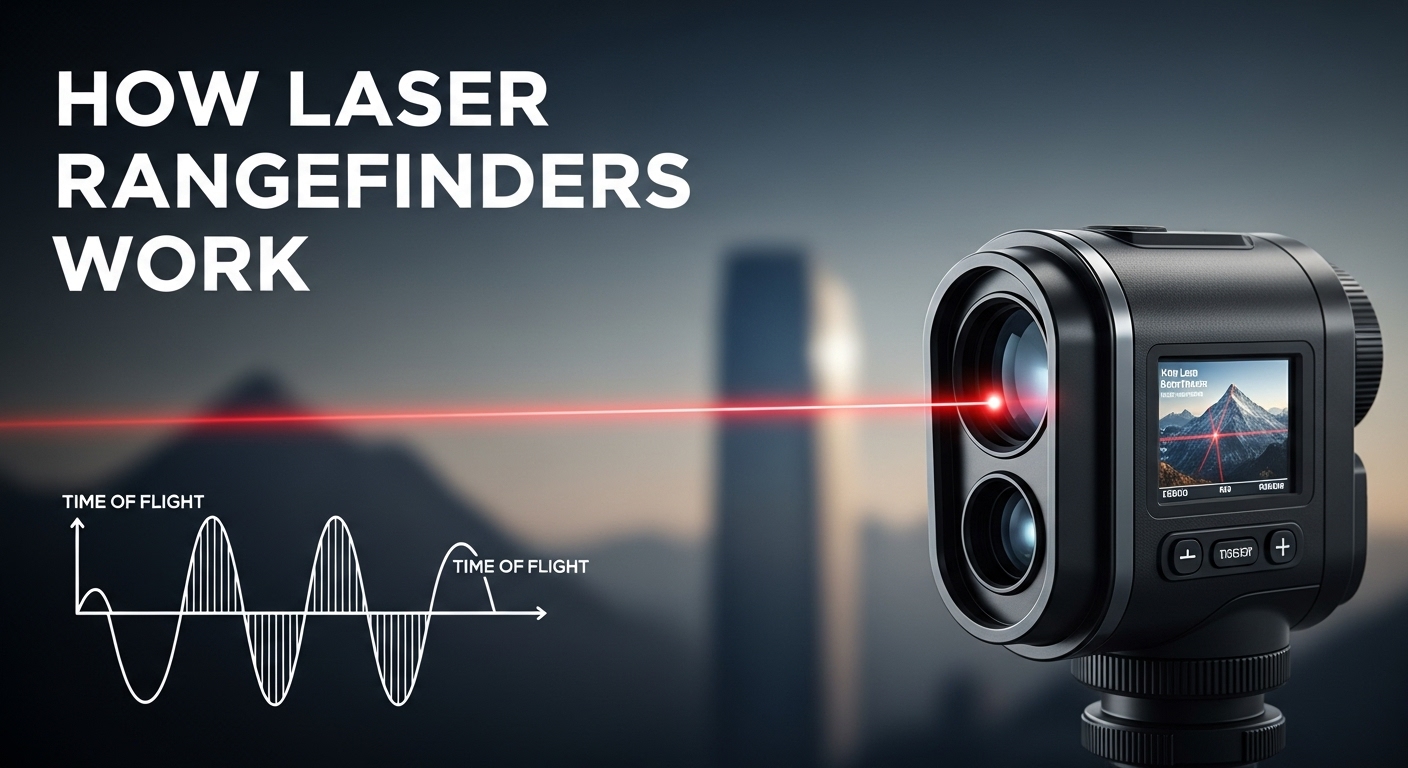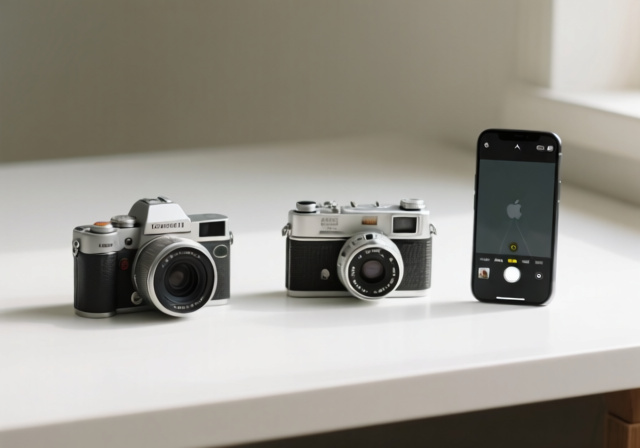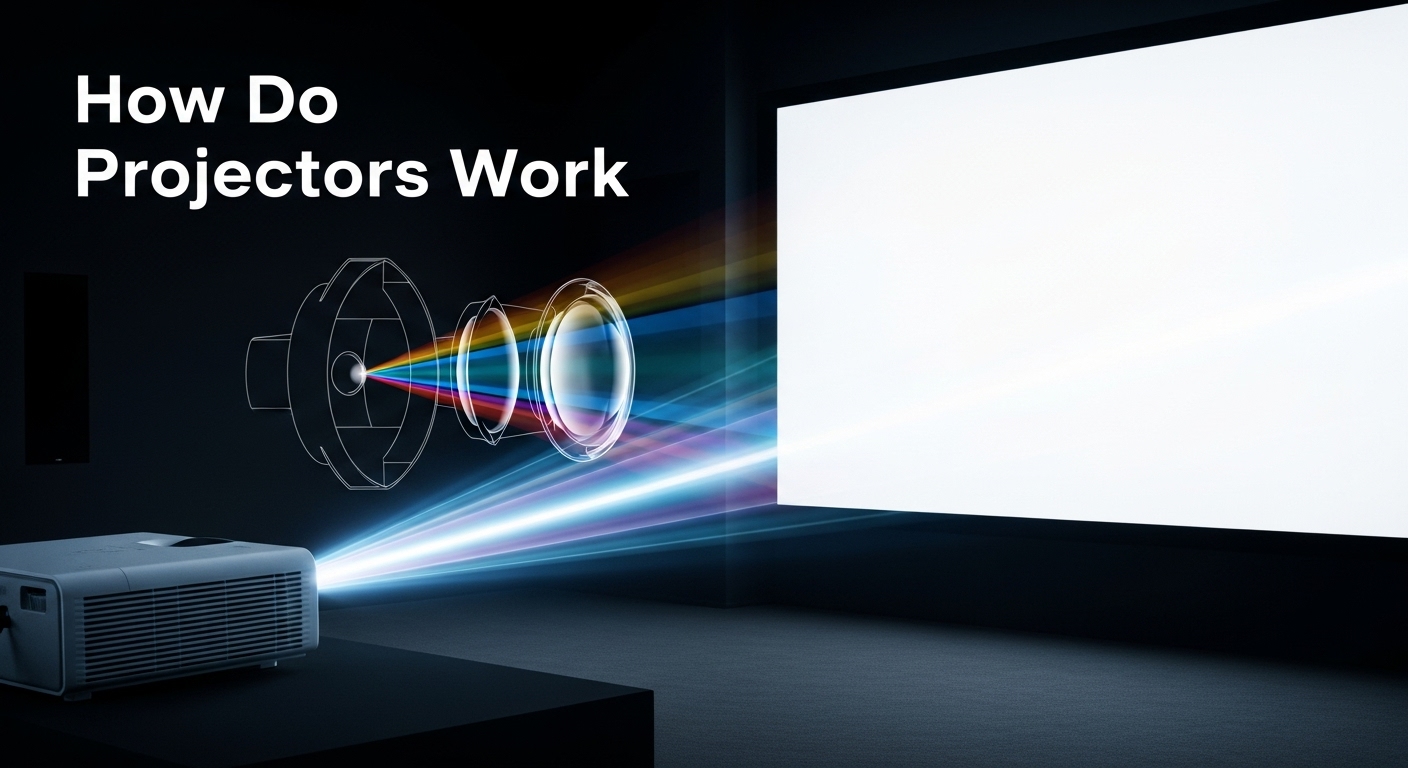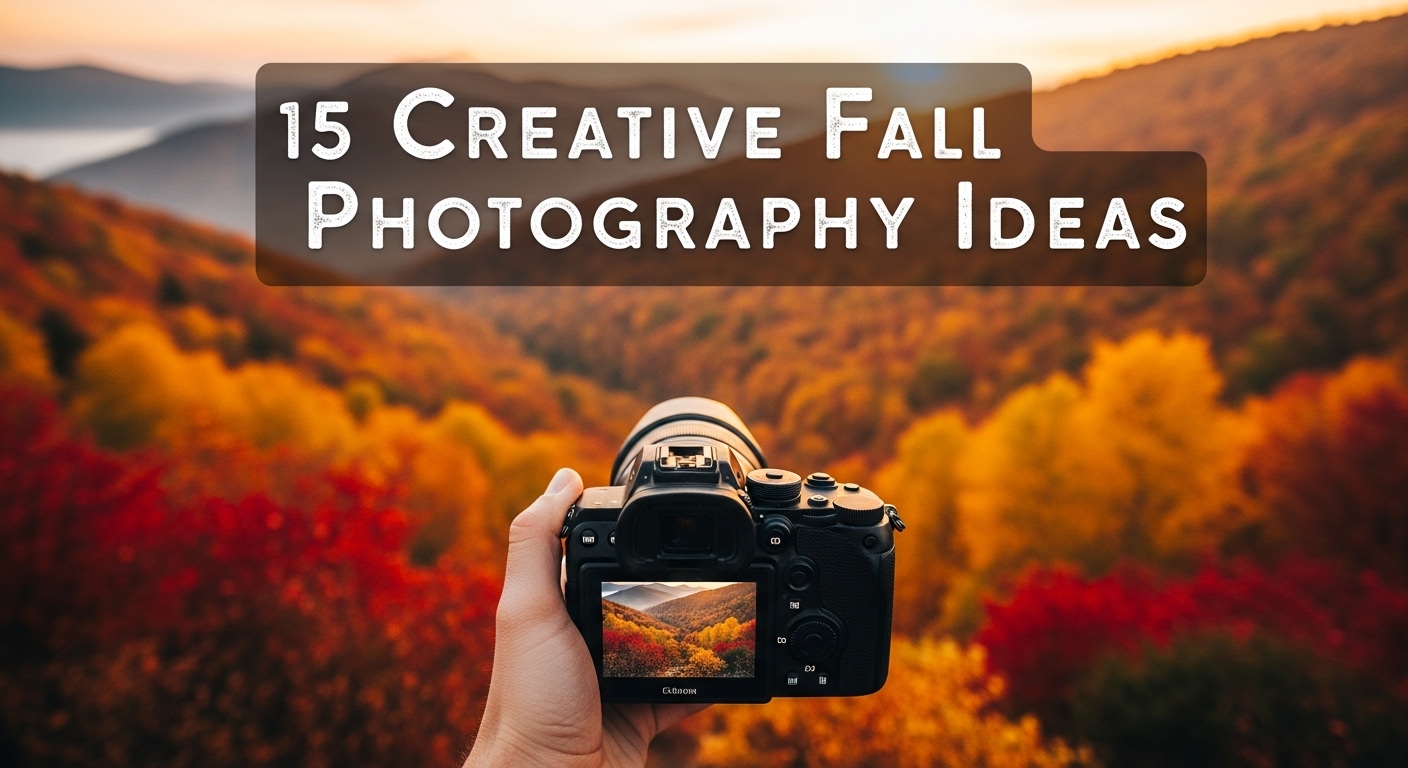



The photography world is experiencing a remarkable transformation. After years of smartphone dominance, dedicated cameras are making an unexpected comeback.
Camera trends in 2025 are defined by five major shifts: AI integration revolutionizing how we capture images, a retro revival bringing back analog aesthetics, the tension between mobile and dedicated photography, the explosion of content creation needs, and a powerful authenticity movement led by Gen Z. These trends are reshaping everything from camera design to how we approach visual storytelling.
As someone who has watched photography evolve over the past two decades, I’ve never seen such dynamic change. The industry is simultaneously pushing forward with cutting-edge AI while looking backward to rediscover the charm of older technologies. This paradox is driving innovation across the market.
In this guide, I’ll break down exactly what’s happening in photography, why these shifts matter, and how they affect anyone interested in creating compelling images.
Artificial intelligence is no longer a buzzword in photography—it’s fundamentally changing how we create images. Modern cameras use AI for everything from recognizing subjects to optimizing settings in real-time.
The most significant AI advancement I’ve witnessed is computational photography bridging the gap between mobile and dedicated cameras. High-end mirrorless cameras now feature AI-driven autofocus systems that can track eyes, animals, and vehicles with uncanny precision. These aren’t just incremental improvements; they’re making professional-level photography accessible to beginners.
Computational Photography: The use of digital processing to enhance images beyond what’s possible through traditional optical methods, combining multiple exposures and AI algorithms to create optimal results.
What excites me most is AI’s role in post-processing. Tools like Adobe’s AI-powered features can now edit hundreds of photos consistently in minutes, not hours. This democratization of professional editing is allowing photographers to focus more on creative decisions rather than technical execution.
However, AI isn’t replacing creativity—it’s augmenting it. The best photographers in 2025 use AI as a tool, not a crutch. They understand which automated features help their workflow and which might compromise their artistic vision.
Nothing has surprised me more than watching Gen Z photographers pay premium prices for cameras that are technically inferior to modern smartphones. Yet this retro revival is one of the most significant trends in photography today.
After my recent analysis of camera forums and market data, I’ve identified three key drivers behind this trend. First, there’s an authentic aesthetic that older cameras capture—imperfections that feel genuine rather than artificially enhanced. Second, the tactile experience of using physical controls creates a more intentional photography process. Third, there’s a rebellion against the instant-gratification culture of smartphone photography.
I’ve seen teens on TikTok proudly showing off “terrible, God-Awful, beat up cameras” they found for $50 at thrift stores. These cameras, once considered obsolete, are now fashion accessories and creative tools. The images they produce—grainy, sometimes blurry, often with unexpected color shifts—are exactly what young photographers want.
Manufacturers have noticed. Fujifilm’s retro-styled X-series cameras continue to sell out, while Canon and Nikon have reintroduced vintage-inspired models. Even companies like Kodak are bringing back classic film cameras to meet demand.
⏰ Time Saver: Looking for authentic photography aesthetics? Start with film simulation modes or vintage presets before investing in expensive retro gear.
The economics are fascinating too. Early 2000s digital cameras that once sold for $500 now command $200-300 on eBay. Film camera prices have doubled in the past two years. This isn’t just a trend—it’s a fundamental shift in how different generations value photography.
The debate between smartphone and dedicated camera photography has evolved. It’s no longer about which is “better”—it’s about which tool serves which purpose.
Smartphones excel at convenience and computational photography. They’re always with you, instantly shareable, and increasingly sophisticated. The iPhone 15 Pro’s camera system produces images that would have required a dedicated camera just a few years ago.
But dedicated cameras offer something smartphones can’t replicate: creative control. Physical dials, interchangeable lenses, larger sensors, and optical viewfinders provide a fundamentally different photography experience. This is why content creators, professionals, and enthusiasts continue to invest in dedicated equipment.
| Factor | Smartphone Photography | Dedicated Camera Photography |
|---|---|---|
| Convenience | Always available, instantly shareable | Requires planning, deliberate use |
| Image Quality | Excellent for social media, limited for large prints | Superior in low light, professional-grade results |
| Creative Control | Limited to software controls | Full manual control, interchangeable lenses |
| Learning Curve | Minimal, point-and-shoot | Steep but rewarding |
| Investment | Part of phone cost | $500-5000+ for system |
From my experience testing both extensively, here’s the reality: use your smartphone for daily moments and social content. Invest in a dedicated camera when you want to create something intentional—portraits with beautiful background blur, landscape prints, or professional work.
The gap is closing, but dedicated cameras remain essential for serious photography. The key is understanding which tool matches your goals, not getting caught in tribal loyalty to one or the other.
The rise of content creation has spawned an entirely new category of cameras. These aren’t just traditional cameras with video features—they’re purpose-built tools for social media creators.
I’ve tested dozens of these cameras, and the best ones share specific features: articulating screens for self-recording, excellent built-in microphones or audio inputs, reliable autofocus that keeps faces sharp, and vertical video orientations optimized for social platforms.
Sony’s ZV-1 series has become the gold standard for vlogging. It packs professional features into a compact body that’s perfect for creators on the move. Canon’s G7X series remains popular among YouTubers for its color science and user-friendly interface. Even traditional camera companies are adapting—Panasonic’s GH series has evolved to meet the demands of hybrid photo/video creators.
What’s fascinating is how these cameras are influencing traditional photography. Features once considered niche—like live streaming directly from cameras or automatic background replacement—are now standard. The boundary between photographer and videographer continues to blur.
For those interested in star photography techniques or specialized photography, content creation cameras offer surprising versatility. Many photographers are discovering that having video capabilities opens new creative possibilities they hadn’t considered.
✅ Pro Tip: When choosing a content creation camera, prioritize audio quality. Many creators invest heavily in image quality but neglect sound, which can make or break viewer engagement.
Understanding camera trends in 2025 requires understanding the generational forces driving them. Gen Z and millennials aren’t just participating in photography—they’re fundamentally changing it.
Gen Z photographers (born 1997-2012) prioritize authenticity over perfection. They’re drawn to film cameras, vintage digital cameras, and any technology that produces images feeling “real” rather than computationally perfect. Their aesthetic often embraces grain, light leaks, and other “imperfections” that previous generations tried to eliminate.
Millennials (born 1981-1996) approach photography differently. Having grown up during the digital transition, they appreciate both technological advancement and nostalgia. Many are returning to photography as a mindful escape from digital overwhelm, investing in quality equipment as a hobby rather than just a tool.
I’ve spent hours in photography forums reading discussions between these generations. Gen Z users often ask about finding cheap film cameras or achieving specific vintage looks. Millennials typically seek advice on building a quality camera system that will last. Both groups, however, share a rejection of the overly processed, hyper-real images that dominated Instagram in the 2010s.
This generational shift is having real market impact. Camera companies can no longer succeed by purely marketing technical specifications. They must understand the emotional and aesthetic motivations driving purchasing decisions. That’s why we’re seeing retro designs, film simulation modes, and marketing that emphasizes feeling over features.
Looking beyond 2025, several emerging technologies will continue shaping photography. AI will become more sophisticated, eventually enabling real-time scene understanding and automated editing that matches personal style rather than generic preferences.
Sustainability will increasingly influence purchasing decisions. Camera manufacturers are already exploring recycled materials, repairable designs, and longer product cycles. The “buy it for life” mentality is gaining traction among environmentally conscious photographers.
Computational photography will continue democratizing professional techniques. Features like depth mapping, multi-frame compositing, and AI-powered selection tools—once available only in expensive software—are becoming standard in consumer cameras.
Perhaps most interestingly, we’re seeing the emergence of new imaging paradigms. Computational light field cameras, which can refocus images after capture, are moving from experimental to practical. Event cameras that capture changes rather than frames promise entirely new creative possibilities.
For photographers, this means continuous learning is essential. The skills that mattered five years ago—understanding exposure, composition, lighting—remain fundamental. But new skills, like working with AI tools and understanding computational imaging, are becoming increasingly important.
Retro-style cameras from Fujifilm and Sony are trending heavily, along with content creation-focused cameras like the Sony ZV-1. Film cameras are also experiencing a major revival, especially among Gen Z photographers seeking authentic aesthetics.
Gen Z photography trends emphasize authenticity over perfection, vintage aesthetics, film photography, and cameras that produce unique, non-digital-looking images. They reject overly processed smartphone photos in favor of grainy, imperfect images that feel genuine and artistic.
The Canon G7X Mark III, Sony ZV-1, Fujifilm X100V, and vintage film cameras like the Canon AE-1 are popular on TikTok. Content creators also favor smartphones with cinematic modes, but there’s growing interest in dedicated cameras that offer more creative control.
Yes, dedicated cameras are experiencing a significant comeback in 2025. Sales data shows increased demand for mirrorless cameras, vintage cameras, and content creation-focused models. This revival is driven by creators seeking authenticity, creative control, and alternatives to smartphone photography.
AI is transforming photography through automated editing, intelligent autofocus systems, computational imaging techniques, and generative AI capabilities. It’s making professional techniques more accessible while enabling new creative possibilities through smart automation.
Retro cameras offer tactile controls, unique image characteristics, and a deliberate shooting process that many photographers find refreshing. The vintage aesthetic they produce appeals to those seeking authenticity and individuality in an age of digital perfection.
The photography landscape in 2025 offers more options than ever before. Whether you’re a professional, enthusiast, or someone just getting started, understanding these trends helps you make smarter decisions about equipment and approach.
My advice? Don’t get caught in technology for its own sake. Choose tools that serve your creative vision. If that means a vintage film camera that produces dreamy, unpredictable images, embrace it. If you need the latest AI-powered mirrorless camera for professional work, invest wisely. The best camera trends are the ones that enhance your photography, not dictate it.
Remember that the fundamental principles of great photography haven’t changed: compelling composition, thoughtful lighting, and authentic emotion still matter more than megapixels or AI features. Technology evolves, but the power of a meaningful image remains timeless.
For more photography tips and guides that blend traditional techniques with modern tools, explore our comprehensive resources on adapting to photography’s exciting future.







